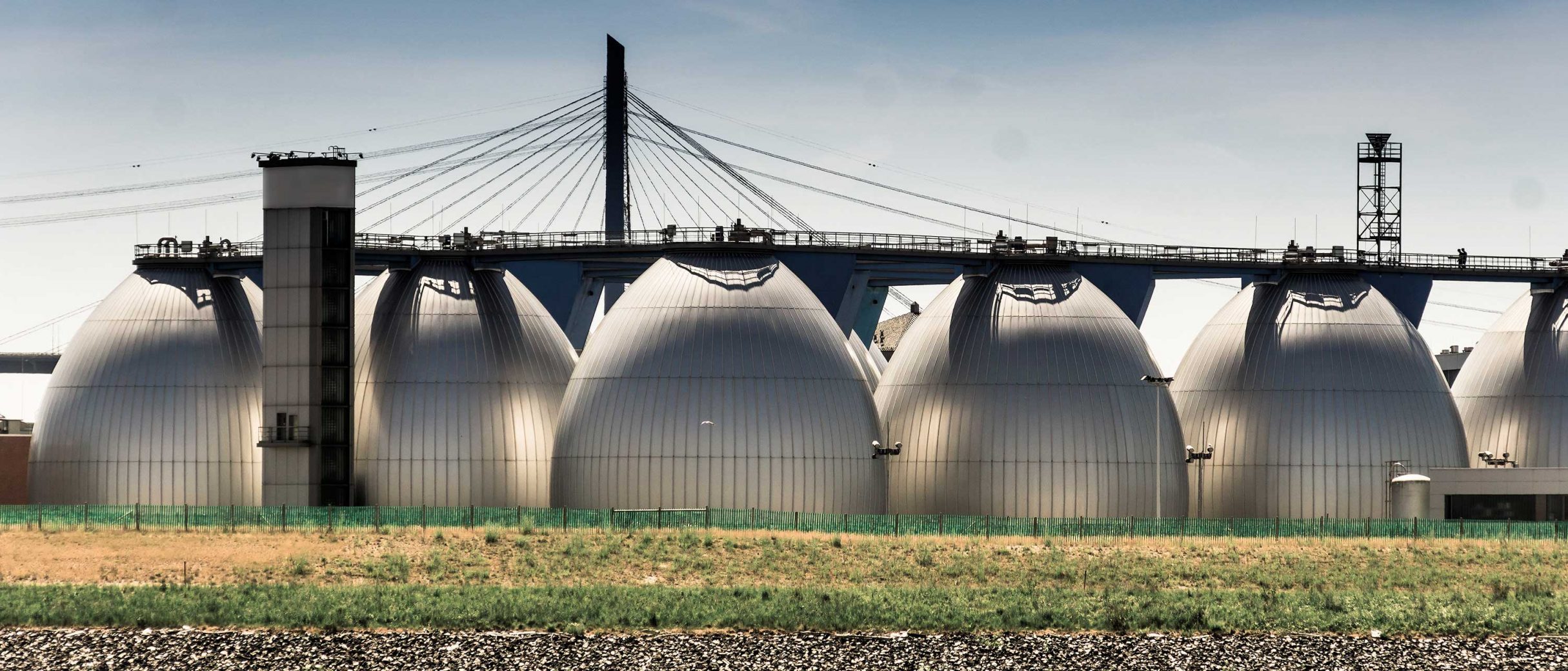If biodegradation of wastewater constituents takes place in the absence of atmospheric oxygen and the formation of methane, this is anaerobic wastewater treatment or digestion. Carbon dioxide and water are produced as degradation products in addition to methane. The mixture of methane and carbon dioxide is also called biogas or digester gas.
Compared to aerobic treatment, in which oxygen is supplied and carbon dioxide is mainly formed from decomposed carbon, anaerobic treatment can make a considerable contribution to climate protection if energy is produced from the biogas.
PWT prefers anaerobic processes for sludge treatment in medium-sized and large sewage treatment plants as well as in numerous industrial processing and manufacturing processes whose wastewater contains a high proportion of organic impurities, because these are more energy-efficient (use of biogas, no energy input for aeration). Anaerobic wastewater treatment also produces less sewage sludge than the aerobic process.
Special care is required when planning anaerobic biological treatment plants and handling biogas. The professionals at PWT have the experience and skills to master this task.
Anaerobic sewage sludge stabilization
For medium-sized and large municipal wastewater treatment plants, anaerobic sludge stabilization is the best solution in terms of economy, energy efficiency and environmental protection.
A classical stabilization takes place in bioreactors, in the so-called digestion towers. Within about 20 days, the sludge is subjected to controlled fermentation under exclusion of oxygen. The released biogas (digester gas) is inflammable and can be used in an energy efficient way, for example, to generate electricity in combined heat and power plants or to further heat dry sludge. The digestion also causes a partial degradation of the sewage sludge, so that smaller quantities have to be disposed of. In addition, the sewage sludge is easier to dewater after anaerobic treatment.
Waste water treatment by anaerobic activated sludge process
The anaerobic version of the activated sludge process is a classical contact sludge process in a fully mixed reactor. Sludge separation is carried out by sedimentation or via membranes, which can be designed externally or integrated into the reactor.
The advantages of the process are clear on the energy saving side, especially in the treatment of organically heavily polluted wastewater. This is why the process is often used alone or in combination with aerobic processes for COD-based wastewater treatment in the paper, beverage and food industries.
Wastewater treatment by anaerobic biofilm process
In the anaerobic version of the biofilm process as a floating bed or fixed bed, the use of carrier materials enables the development of more sensitive organisms, which are particularly required for wastewater that is difficult to degrade.
